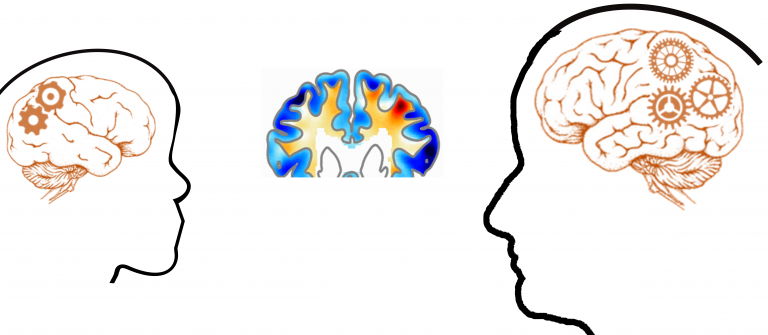Compulsivity and impulsivity linked to brain development in adolescence
26 June 2019
The development of psychiatric disorders such as obsessive-compulsive disorder (OCD) and attention-deficit/hyperactivity disorder (ADHD) during adolescence could be linked to impaired growth of myelin, the insulation layer that wraps around brain cells, finds a new UCL-led study.

The longitudinal brain imaging study, published in Nature Neuroscience, found that adolescents who showed the least growth of myelin in two key brain areas developed more compulsive and impulsive traits – two common aspects of psychiatric conditions, the extremes of which are the basis of OCD and ADHD.
Myelination – the growth of myelin along specific pathways enabling communication between neurons – can be improved with training, suggesting that further research may be able to develop new preventative early interventions.
The research team, led by Professor Ray Dolan from UCL-Max Planck Centre for Computational Psychiatry and Ageing, scanned the brains of 288 healthy people aged 14-24, most of whom were scanned two or three times across an average follow-up time of 1.3 years. They used a newly-developed MRI imaging technique that enables the study of microstructural brain development by measuring myelin growth.
The researchers found that myelin growth continued into adulthood, and that impulsivity and compulsivity were each associated with reduced growth of myelin in a different brain area.
People with higher levels of impulsivity tended to have a lower baseline degree of myelination in one area of the brain, and the gap further expanded as seen in follow-up scans, suggesting that brain mechanisms underlying ADHD may have long-lasting effects.
The area of the brain that had reduced myelin growth in people with compulsive traits has previously been found to show altered function in people with OCD and is considered to be a prime target for invasive treatments for people whose OCD does not improve with standard therapy.
OCD most commonly develops during adolescence, so these findings could shed light on the role of brain development at this critical period.
Previous studies have found links between brain volume and psychiatric traits but haven’t investigated the underlying patterns, by tracking the development over time of a specific type brain matter such as myelin.
“Adolescence is a critical time period for mental health. Seventy-five per cent of all psychiatric disorders arise during adolescence and can often have long-term consequences. We’ve added to evidence that aberrant brain development during adolescence could have long-term consequences to well-being,” said co-lead researcher Dr Tobias Hauser (Max Planck UCL Centre for Computational Psychiatry & Ageing Research and Wellcome Centre for Human Neuroimaging, UCL).
“While we have not shown a causal link between myelination and the development of psychiatric symptoms, it is clear that more research to understand this link could help us learn how mental health problems emerge and how they could be prevented,” added co-lead researcher Dr Gabriel Ziegler, who began the study at UCL before moving to Otto von Guericke University Magdeburg.
The researchers are now investigating whether brain development before adolescence predicts the emergence of these mental health problems and are currently looking for participants.
The study was conducted by researchers at UCL and University of Cambridge and funded by Wellcome.
Links
- Nature Neuroscience
- Professor Ray Dolan
- UCL-Max Planck Centre for Computational Psychiatry and Ageing
- Dr Tobias Hauser
- UCL Queen Square Institute of Neurology
- Wellcome Centre for Human Neuroimaging, UCL
- Developmental Computational Psychiatry group
 Close
Close

